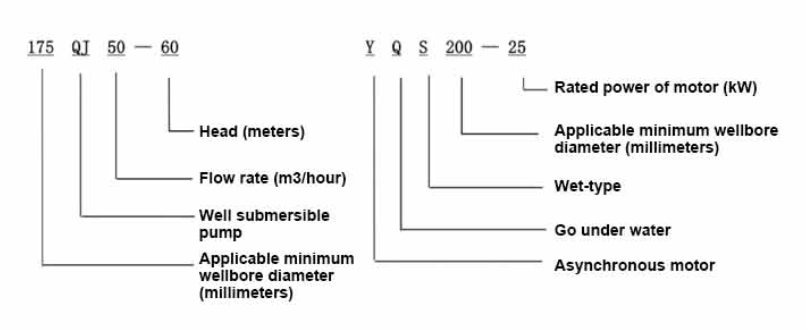Nov . 02, 2024 02:02 Back to list
bottom suction submersible pump
Bottom Suction Submersible Pumps A Comprehensive Overview
Bottom suction submersible pumps are innovative devices designed specifically for the effective extraction of water from deep or submersible environments. These pumps are predominantly used in applications such as dewatering, irrigation, drainage, and sewage treatment. Their unique design allows for the efficient removal of water from various depths, making them a popular choice in both industrial and agricultural sectors.
Design and Functionality
One of the distinctive features of bottom suction submersible pumps is their submerged operation. These pumps are equipped with a specialized intake located at the bottom, which facilitates the suction of water directly from the source. This design enables the pump to draw water even when the water level is low, ensuring maximum efficiency in water extraction.
The typical construction of a bottom suction submersible pump includes a motor, impeller, and volute casing. The motor is sealed to prevent water ingress, ensuring durability and longevity. The impeller is responsible for creating the necessary pressure to push water through the discharge pipe, while the volute casing helps direct the flow of water efficiently. This streamlined design not only improves performance but also minimizes energy consumption.
Applications
Bottom suction submersible pumps are versatile and find utility in a variety of applications. In agriculture, they are used to irrigate fields, especially in regions where water scarcity is a critical issue. Their ability to operate underwater makes them ideal for extracting water from wells, ponds, or reservoirs.
In municipal applications, these pumps are integral to wastewater management systems. They effectively manage the disposal of sewage and stormwater, preventing flooding in urban areas. Their reliable performance in harsh conditions makes them crucial for emergency dewatering situations, such as after heavy rainfall or natural disasters.
bottom suction submersible pump

Advantages
The advantages of bottom suction submersible pumps are numerous. First and foremost, their submerged design allows for quiet operation, making them suitable for residential areas where noise reduction is essential. Additionally, since these pumps are placed below the water surface, they do not require complex above-ground support structures, hence saving space and reducing installation costs.
Another significant benefit is their energy efficiency. Because these pumps operate at the source of the water, they require less energy to lift the water compared to surface pumps. This efficiency not only translates to lower operational costs but also contributes to environmental sustainability by reducing the carbon footprint associated with water pumping.
Maintenance and Care
While bottom suction submersible pumps are known for their reliability, regular maintenance is essential to ensure optimal performance. It is crucial to keep the pump and its components clean and free from debris to avoid clogs that can hinder operation. Regular checks on the motor and electrical components can also prevent malfunctions and extend the lifespan of the pump.
Conclusion
Bottom suction submersible pumps are vital tools in modern water management systems, offering efficiency, reliability, and versatility. Their unique design and functionality cater to various applications in agriculture, municipal services, and industrial processes. As technology advances, these pumps continue to evolve, further enhancing their effectiveness and sustainability in addressing water-related challenges. Whether for irrigation, drainage, or wastewater treatment, bottom suction submersible pumps remain essential for efficient water management in today's world.
-
Submersible Water Pump: The Efficient 'Power Pioneer' of the Underwater World
NewsJul.01,2025
-
Submersible Pond Pump: The Hidden Guardian of Water Landscape Ecology
NewsJul.01,2025
-
Stainless Well Pump: A Reliable and Durable Pumping Main Force
NewsJul.01,2025
-
Stainless Steel Submersible Pump: An Efficient and Versatile Tool for Underwater Operations
NewsJul.01,2025
-
Deep Well Submersible Pump: An Efficient 'Sucker' of Groundwater Sources
NewsJul.01,2025
-
Deep Water Well Pump: An Efficient 'Sucker' of Groundwater Sources
NewsJul.01,2025
-
 Submersible Water Pump: The Efficient 'Power Pioneer' of the Underwater WorldIn the field of hydraulic equipment, the Submersible Water Pump has become the core equipment for underwater operations and water resource transportation due to its unique design and excellent performance.Detail
Submersible Water Pump: The Efficient 'Power Pioneer' of the Underwater WorldIn the field of hydraulic equipment, the Submersible Water Pump has become the core equipment for underwater operations and water resource transportation due to its unique design and excellent performance.Detail -
 Submersible Pond Pump: The Hidden Guardian of Water Landscape EcologyIn courtyard landscapes, ecological ponds, and even small-scale water conservancy projects, there is a silent yet indispensable equipment - the Submersible Pond Pump.Detail
Submersible Pond Pump: The Hidden Guardian of Water Landscape EcologyIn courtyard landscapes, ecological ponds, and even small-scale water conservancy projects, there is a silent yet indispensable equipment - the Submersible Pond Pump.Detail -
 Stainless Well Pump: A Reliable and Durable Pumping Main ForceIn the field of water resource transportation, Stainless Well Pump has become the core equipment for various pumping scenarios with its excellent performance and reliable quality.Detail
Stainless Well Pump: A Reliable and Durable Pumping Main ForceIn the field of water resource transportation, Stainless Well Pump has become the core equipment for various pumping scenarios with its excellent performance and reliable quality.Detail
